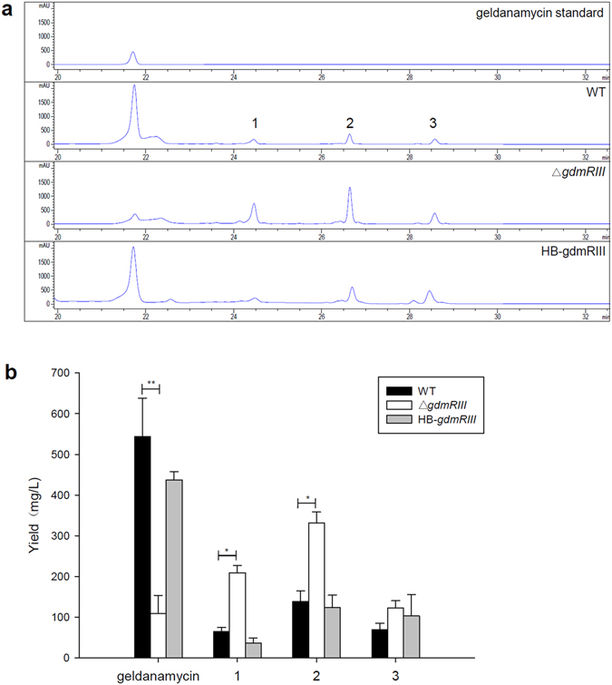Our official English website, www.x-mol.net, welcomes your
feedback! (Note: you will need to create a separate account there.)
GdmRIII, a TetR Family Transcriptional Regulator, Controls Geldanamycin and Elaiophylin Biosynthesis in Streptomyces autolyticus CGMCC0516.
Scientific Reports ( IF 3.8 ) Pub Date : 2017-07-06 , DOI: 10.1038/s41598-017-05073-x MingXing Jiang , Min Yin , ShaoHua Wu , XiuLin Han , KaiYan Ji , MengLiang Wen , Tao Lu
Scientific Reports ( IF 3.8 ) Pub Date : 2017-07-06 , DOI: 10.1038/s41598-017-05073-x MingXing Jiang , Min Yin , ShaoHua Wu , XiuLin Han , KaiYan Ji , MengLiang Wen , Tao Lu

|
Geldanamycin and elaiophylin are co-produced in several Streptomyces strains. However, the regulation of their biosynthesis is not fully understood yet. Herein the function of a TetR family regulator GdmRIII, which is located in the biosynthetic gene cluster of geldanamycin, was studied to understand the regulatory mechanism of geldanamycin biosynthesis in Streptomyces autolyticus CGMCC0516. The production of geldanamycin decreased substantially in a ΔgdmRIII mutant and the yield of three compounds which were thought to be geldanamycin congeners greatly increased. Surprisingly, the structural elucidation of these compounds showed that they were elaiophylin and its analogues, which implied that GdmRIII not only played a positive regulatory role in the biosynthesis of geldanamycin, but also played a negative role in elaiophylin biosynthesis. GdmRIII affected the expression of multiple genes in both gene clusters, and directly regulated the expression of gdmM, gdmN, and elaF by binding to the promoter regions of these three genes. A conserved non-palindromic sequence was found among the binding sites of elaF. Our findings suggested that the biosynthetic pathways of geldanamycin and elaiophylin were connected through GdmRIII, which might provide a way for Streptomyces to coordinate the biosynthesis of these compounds for better adapting to environment changes.
更新日期:2017-07-06


















































 京公网安备 11010802027423号
京公网安备 11010802027423号